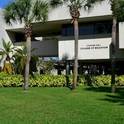
Efforts to improve the number and quality of the high school physics teaching workforce have taken several forms, including those sponsored by professional organizations. Using a series of large-scale teacher demographic data sets from the National Center for Education Statistics (NCES), this study sought to investigate trends in teacher quality at the national level in the two and a half decades between 1987 and 2012. Specifically, we investigated (i) details about the degree backgrounds, main teaching assignments, and experience levels of those assigned to teach physics; (ii) whether the proportion of those with certifications in physics as a fraction of the entire physics teaching workforce had changed; and (iii) if workforce diversity (with respect to race and gender) had changed over time. Our data indicate that trends in these domains have generally been positive, but still fall short of having a highly qualified physics teacher in each classroom. Additionally, the population of physics teachers has more novices and fewer veterans than it did 10 years ago, although veteran physics teachers are not as rare as those in other branches of high school STEM fields. We also analyzed trends in physics teacher race and gender diversity and found them to lag behind other STEM and non-STEM teacher communities. High school physics is still mostly taught by white males with backgrounds from outside of physics. Implications for future policy decisions at the local and national levels are discussed, including attending to the specific needs of degree-holding and non-degree-holding physics teachers separately and localizing teacher recruitment and preparation efforts in regional centers.

Published in Physical Review Physics Education Research, 13, doi: 10.1103/PhysRevPhysEducRes.13.020122